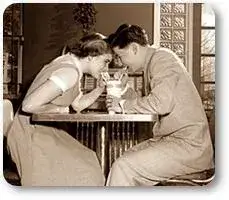Attachment. Many of us, drawing from our own life experiences, can readily identify what we believe to be true love. But what if it’s not always “true love” we’re experiencing.
But rather a simple attachment a comfortable, familiar routine shared between two people? I think you’ll agree that by simply redirecting our thoughts, we can avoid blindly succumbing to raw emotions.
True love is incredibly difficult to walk away from. Conversely, letting go of mere attachment can be surprisingly easy.
Attachment, what Exactly Is Attachment, and How Does It Form?
The simplest way to understand whether you truly love someone is to consider what happens if you lose them. If a beloved person vanishes from your life, you might feel, for a time, as if you’ve lost your very reason for living.
It’s a sensation akin to having your soul ripped away. Grief and sorrow press in on you from all sides, overwhelming your senses.
However, if, after a separation, you feel none of the aforementioned emotions, then what you experienced was likely the most basic form of attachment, devoid of anything truly profound.
Our style of attachment is largely forged in childhood. It’s based on the blueprint of our early relationships with our parents or primary caregivers.
This foundational model significantly dictates our behavior in subsequent romantic relationships. Understanding how people with different attachment styles come together in pairs is crucial, as it sheds light on the trajectory and ultimate outcome of these relationships.
Understanding Attachment Styles.
Anxious, Avoidant, or Secure?
How can you decipher your own attachment style, and that of your partner, to build more harmonious relationships? It’s a fundamental truth that all people express and experience love in diverse ways.
Some individuals effortlessly form strong, deep bonds, while others appear predisposed to dysfunctional marriages or even solitude. In reality, anyone can cultivate harmonious relationships. The key lies in understanding how to do so, and what truly helps foster warm and enduring connections.
Psychologists typically distinguish three primary attachment styles: anxious, avoidant, and secure. While symptoms can sometimes be mixed, grasping the core characteristics of these three main types is enough to comprehend how one’s perception of love influences relationships.
The Anxious Attachment Style.
A Constant Quest for Reassurance.
An individual who leans towards an anxious attachment style typically suffers from a profound lack of self-confidence. They constantly strive to earn the approval of others and are often terrified of making decisions independently, doubting their own worthiness of love.
When they enter romantic relationships, such individuals are plagued by doubts about their partner’s feelings and their own value.
If their partner desires alone time, pursues personal interests, or spends time with friends, it can trigger intense negative emotions, panic, and overwhelming jealousy.
They frequently gravitate towards codependent relationships, where every minor issue is exaggerated and dramatized. Their underlying thought process often follows this pattern:
“No one else will do for me; I’m no longer needed by anyone, so losing my current partner would be a catastrophe of cosmic proportions.”
The danger here isn’t solely that their chosen partner might eventually leave, unable to endure constant attempts at control, or that they might succumb to being suppressed. More importantly, the individual with the anxious attachment style suffers immensely.
In addition to perpetual anxiety, they feel an overwhelming need to maintain the relationship. These relationships often develop poorly, clinging to an unhealthy closeness, and the anxious individual may sacrifice everything just to avoid being alone.
The Anxious-Avoidant Dynamic.
A Tumultuous Dance.
This dynamic is rife with manipulation, provocation, and conflict. During even brief disagreements, all past grievances and accusations are invariably resurrected.
The underlying schema is: “Any attention is better than indifference.” Building a healthy relationship is incredibly challenging when driven by a constant fear of loss and an overreaction to every (real or imagined) signal of distance.
The Avoidant Attachment Style.
A Fortress of Independence.
The avoidant attachment style is, in many ways, the antithesis of the anxious style. Individuals who exhibit this style appear outwardly self-assured, even exceptionally so.
At times, they might seem arrogant or cold, giving the impression that they don’t need anyone at all. They often openly declare that they value freedom and independence above all else.
These individuals find it difficult to establish close relationships. Even after forming a family, they rarely fully open up, recoiling from intimacy and genuine warmth. They frequently employ humor and sarcasm as a defense mechanism, which can lead to feelings of loneliness.
They constantly question whether it’s worth letting anyone get too close. The fear of vulnerability outweighs their desire for deep feeling and understanding. They often belittle and mock their partners, offering harsh and tactless criticism.
They don’t feel the need to hide their irritation and frequently look down on their loved ones. In truth, they often seek out flaws to devalue their current relationships, thereby giving themselves official permission to maintain distance.
Many workaholics fall into this category, as they channel their energy into work, which doesn’t demand the same emotional expenditure.
They are often highly successful but may lack close friends among colleagues because they are so immersed in their work. This is precisely because business contacts are perceived as safer, more logical, and more predictable than personal ones.
The Allure of the Unattainable.
A Manifestation of Avoidance.
One characteristic pattern seen in avoidant individuals is an attraction to “impossible” relationships. For example, a tendency to fall in love with married men or women (gender-neutral, of course), or even completely unattainable idols like singers or actors.
While romantic infatuation with ideal figures is common among adolescents, if this persists into adulthood, it warrants reflection on the individual’s underlying predispositions.
Some avoidant individuals consciously choose partners who are unavailable for extended periods due to their profession or other circumstances.
Others might harbor nostalgia for lost or past relationships. These are all ways to focus attachment on something that cannot truly be fulfilled, reinforcing the avoidant’s need for distance.
The Secure Attachment Style.
The Foundation of Healthy Relationships.
The healthiest attachment style is characterized by neither blind urges nor dramatic outbursts. It manifests in individuals with a healthy sense of self-esteem. They seek partners with whom they will genuinely be happy, rather than those who will draw them into manipulative games.
They don’t shy away from intimacy, but they also don’t cling to it. They know how to forgive and admit mistakes, offer support and ask for help.
They are capable of compromise and, when necessary, defending their boundaries. They demonstrate openness in communication and express emotions directly.
People who have developed a secure attachment style are capable of building healthy, harmonious, and warm relationships.
This is precisely because they are self-reliant; they don’t become dependent on others, but genuinely care for those they love, fostering a balanced and respectful connection.
Romantic Relationships Between Different Attachment Styles.
Pairs of two avoidant individuals are almost never found in nature. Combinations of two anxious types are also quite rare.
However, the combination of anxious and avoidant is a classic pairing. This creates an endless game of push and pull, allowing each partner to play out their ingrained scenario.
The anxious individual is convinced that no one truly loves them in this cruel and unfair world. The avoidant individual, on the other hand, believes that everyone wants them and can’t live without them, as long as they maintain their distance.
Between a secure and an avoidant type, the anxious individual is more likely to choose the latter.
Why?
The secure type is often perceived as “boring”! For the anxious type, a calm, respectful, and dialogue-based attachment doesn’t feel like love. There’s no passion, no spark, no emotional roller coaster.
While an eternal melodrama can be exhausting when considering family and long-term relationships, it’s unlikely that children born from the union of anxious and avoidant types will spend their formative years in a healthy atmosphere. Ultimately, their parents will likely be unhappy with each other.
The Power of Change.
Healing and Harmonizing Attachment Styles.
Crucially, any relationship can become harmonious if at least one partner is committed to changing their behavioral patterns. An attachment style is not set in stone; it can be consciously adjusted and healed.
The anxious type can harmonize when they learn to trust, to rely on themselves, and to recognize their intrinsic worth without constant demands for proof of love. Avoidant individuals need to open up, embrace vulnerability, accept help, and appreciate care.
Mental well-being is contagious in the best sense of the word. A secure partner clearly demonstrates that emotions can be discussed calmly, that conflict isn’t a reason for separation.
Intimacy, trust, and mutual support should not lead to codependency. Even childhood traumas can be healed in healthy, adult relationships. Self-awareness, choosing psychologically stable partners, and cultivating positive shared experiences are the pathways to balance and happiness.
It all boils down to redirecting our thoughts correctly, so we no longer have to blindly trust fleeting emotions.
Have a good day!




